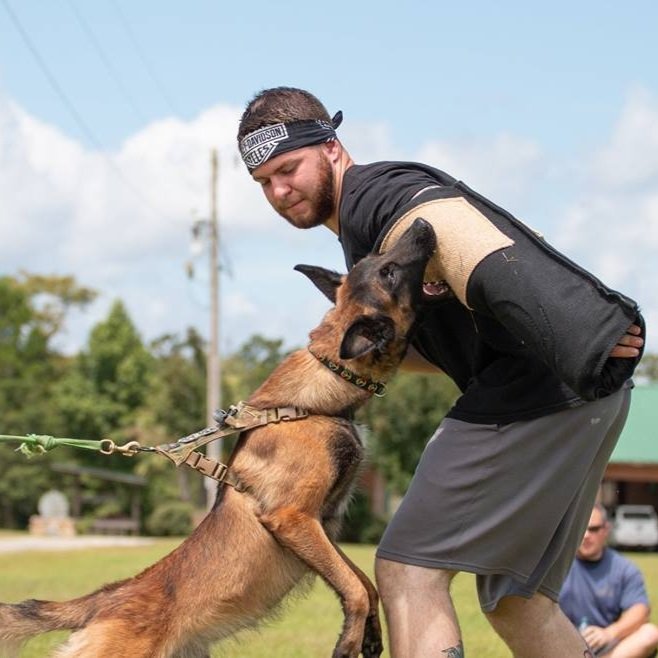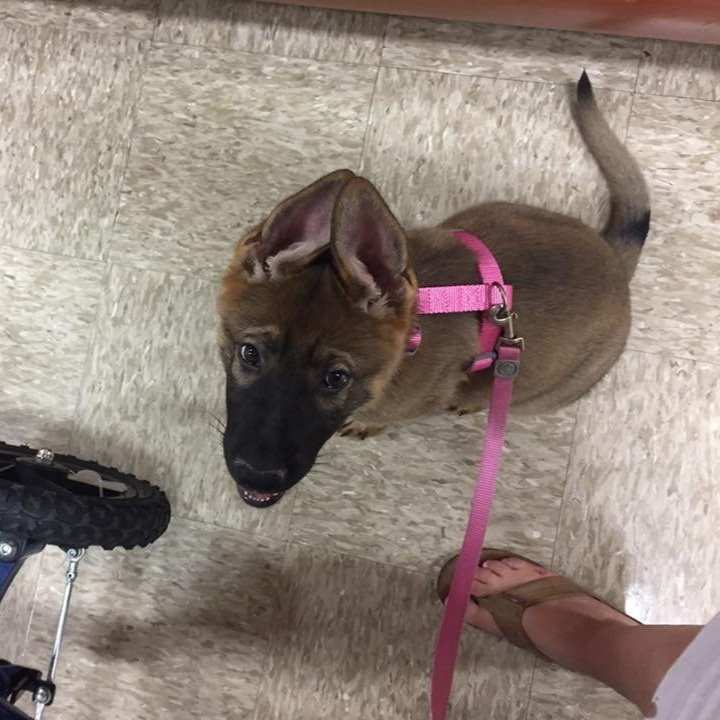All About Harnesses
You have undoubtedly seen the wide variety of harnesses available online and in pet stores. They come in beautiful colors, patterns, seasonal themes, etc. Some are waterproof, have storage pockets, or are advertised with the promise of eliminating a dog’s ability or desire to pull on the leash.
So what does your dog need?
When it comes to harnesses and how to use them I want to highlight this fact: HARNESSES ARE FOR PULLING
Yes, harnesses are used with dogs and puppies for the purpose of making pulling a comfortable experience. Dogs can use as much of their body weight and muscle as they desire to move through a space unencumbered. Anyone on the other end of the harnessed dog’s line has little control of the dog’s movement and speed. For some dog owners this is a miserable experience however this type of pulling behavior most certainly has it’s place in dog training.
When to use a harness?
If harnesses are for pulling you may be wondering if they have a place in your pet’s lifestyle at all.
I recommend harnesses to all of my puppy purchasers and puppy training clients as part of their puppy’s early confidence building and early exposure to the leash. Depending on the puppy’s size I also recommend the harness be paired with a retractable leash or long line so that the puppy has plenty of room to move out and overcome obstacles on their own, without us being right over top of them.
In puppyhood, while harnessed I encourage them to explore and interact with the environment around them. My role is as a guide and to keep them safe and motivated. I’ll engage them with their toys, treats, my voice, and body language to help maintain target behaviors and reach training goals.
For the puppies and young dogs I train and sell, pulling as hard as they can against the harness to reach their target is part of their early drive development and conditioning for future behaviors. I want the puppy or dog to work as hard as they can towards their goal so that when they reach success its an extremely rewarding experience, teaches the dog or puppy that they are AMAZING AND STRONG and builds even more confidence and motivation in the canine. If your harnessed dog has had lots of success dragging you around you are teaching your pet the same. That they are amazing and strong and that getting to where they want to go, even if it means dragging you behind them is soooo rewarding.
When to stop using a harness?
You can count on your puppy to tell you when its time to retire the harness. If your harnessed puppy is confidently exploring environments, taking their food rewards, engages their toys, and/or it starts to feel like you are no longer walking with a puppy but instead flying a very heavy kite it is time to explore new gear options. When walks together deteriorate to you being pulled or dragged it is time to hang up the harness and begin training with a collar.
In addition to harnesses being used in puppyhood they are important tools for specific activities. I also use harnesses in Protection Training, Tracking, Urban Mushing, some Service Dog Tasks, and before and after a variety of UKC & AKC Performance Sports where I don’t want to inhibit my dog’s excitement for the event but still need to keep him safe while we wait our turn.
Service Dog Indy harnessed in a Mobility Assistance Harness on the job with his handler.
Karma runs the greenway with me Bikejoring in a Mushing Harness.
Personal Protection Dog Neo harnessed in a Puppy Agitation Harness during his workout.
What’s the best harness to use?
There are a variety of harness options available for dogs based on the activity the dog will be participating in. Everything from casual outings with a puppy to intense workouts for adult dogs. In my experience there is one harness type that has enough versatility to cover most needs safely. It is a basic adjustable nylon harness. Here is a link to the type I use and recommend most: Adjustable Nylon Dog Harness
This simple harness does not restrict a dog’s movement and when fitted correctly should be impossible for a dog to slip out of.
Companion Puppy Riley harnessed during training away from home.
Service Dog Ike harnessed as a puppy during training away from home.
Is there a harness type to avoid?
Yes! Harnesses that restrict a dog’s natural movement should absolutely be avoided. These are often labeled as “No Pull” or “Easy Walk” harnesses. When fitted properly these harnesses restrict dog’s shoulders, front legs, and chest, even when not pulling on leash. When pulling on this leash, which many dogs learn to do, it contorts their bodies putting stress on joints and risking injury during every use. In addition to injury risk I have personally seen this harness type deform a dog’s front legs and shoulders. Their owner was misinformed and used this harness exclusively during the first years of her dog’s life, fitted “properly” to avoid pulling. I will never ever recommend this harness type to anyone nor put one on a dog in my care.
In addition to the above mentioned harnesses I also do not recommend step in type harnesses as they do not distribute the dog’s weight evenly for safe pulling, restrict a dog’s natural gait, and are notoriously easy for any dog to slip out of.
A dog pulls in his properly fitted Easy Walk No Pull Harness contorting his neck, shoulders, chest, elbows, and spine. This is the “action” or uncomfortable sensation that these harnesses provide to discourage pulling behavior. While this restriction may work for some dogs, many learn to pull through the discomfort and risk serious injury.
Step in harnesses might be convenient but they are very easy for dogs to escape, even when fitted properly and they restrict the dog’s natural movement.
Final thoughts: For most pet owners their puppy will spend a limited amount of time in a harness while they build their confidence in new environments and begin developing on-leash skills with their owner. After that, harnesses are only needed for specific applications where the ability to pull is a target behavior.







